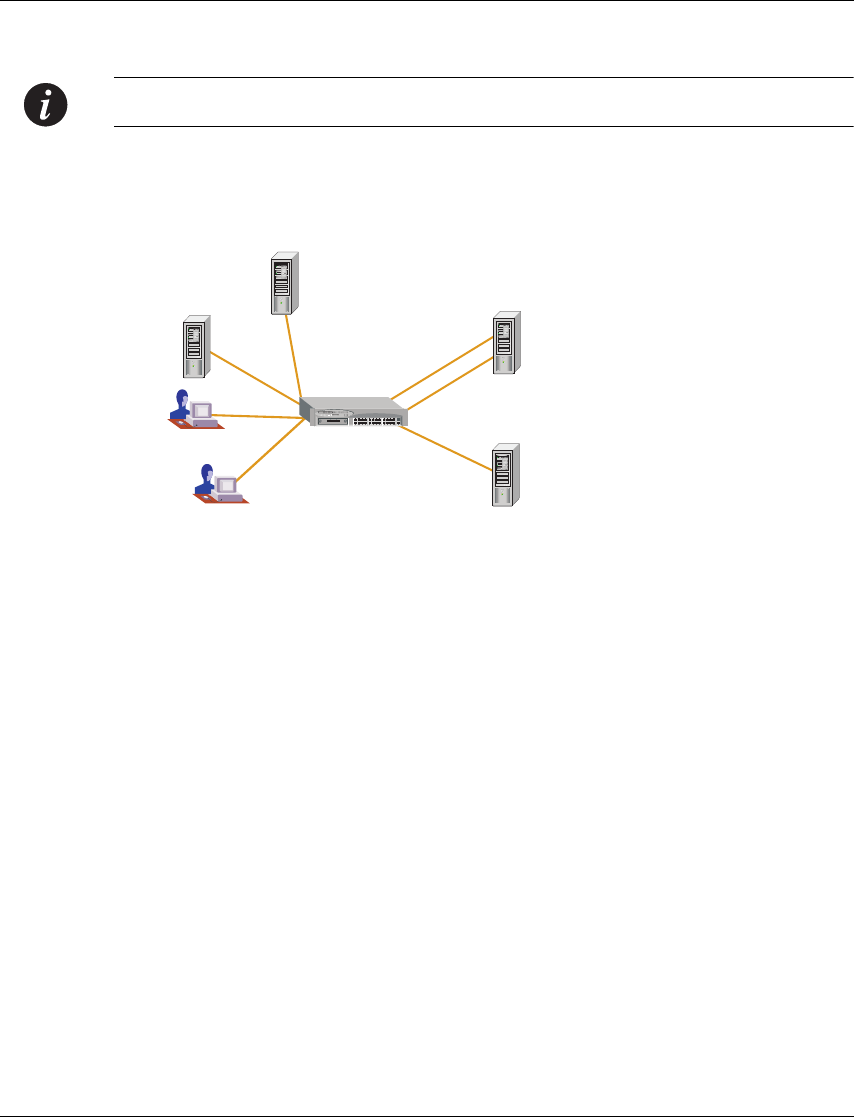
Chapter 14 Load Balancing in the P333R-LB
Avaya P333R-LB User’s Guide 37
DNS Configuration
Note: The following example uses sample IP addresses for illustration only.
Figure 14.11 illustrates a DNS configuration, where DNS traffic to primary and
secondary DNS servers is balanced.
Figure 14.11 DNS Configuration
In Figure 14.11, DNS queries from clients arrive over UDP, while the DNS servers
exchange DNS information via TCP. DNS includes a mechanism by which
secondary and primary servers exchange information. The P333R-LB is required to
balance UDP queries by clients across both primary and secondary servers, while
forwarding TCP traffic only to the primary server. This is done by assigning two
services to the Virtual Server that represents the DNS server to the world. The UDP
service is mapped to a group of servers which include the primary and secondary
Real DNS Servers. The TCP service is configured to include only the Real DNS
server which has the primary role.
Combining Two Cache Applications on the Same Real Caches
Building on the fact that the P333R-LB allows for the same Real Servers to belong to
different Load Balancing applications (i.e. Application Redirection and Server Load
Balancing), it is possible to build a configuration that will implement transparent
caching and non-transparent proxy caching on the same physical machines (refer to
"Combining Two Cache Applications on the Same Real Caches" on page 178).
Load Balancing Metrics
There are different methods, or metrics, that a P333R-LB can use to distribute traffic
among multiple Real Servers. A Real Server is a physical server that is associated
P333R-LB
UDP
DNS - UDP
DNS - TCP
DNS - UDP
DNS - TCP
Primary
Server
Clients
DNS
Servers
Secondary
Server
Server
Server
Server
Server


















